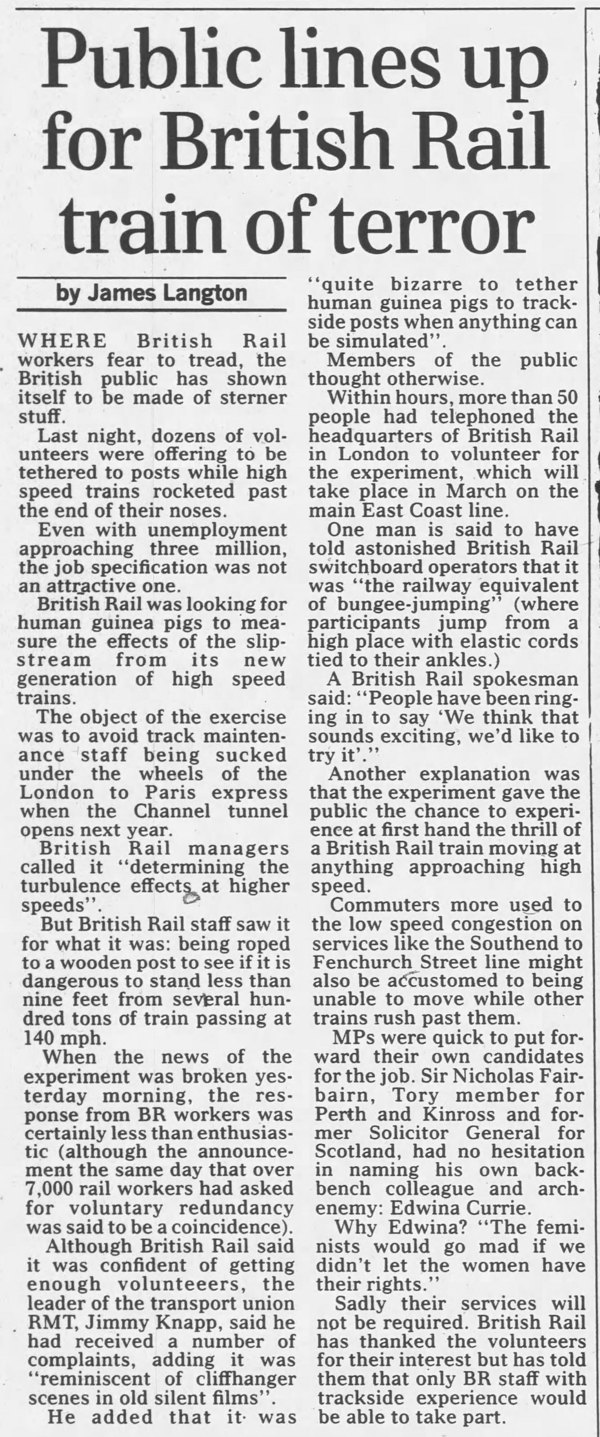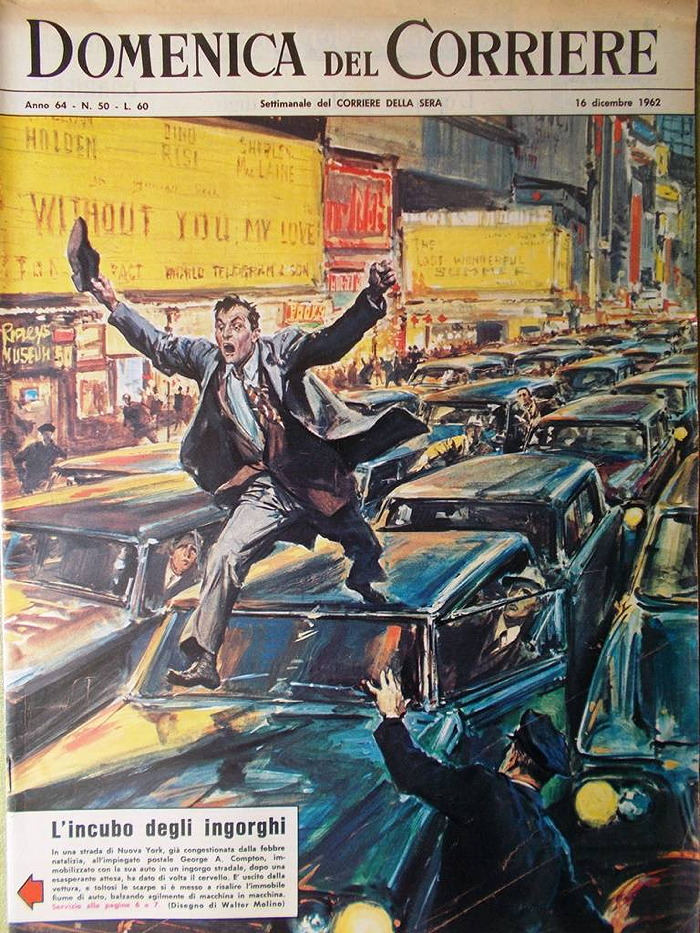Transportation
Miss Kansas Turnpike
I found two holders of the 'Miss Kansas Turnpike' title. The first was Theo Tautfest, who won the title in 1960. The second was Lois Rhodus, who held the title in 1961, while simultaneously being 'Miss Kansas City'.Some info about the Kansas Turnpike from Wikipedia:
Because it predates the Interstate Highway System, the road is not engineered to current Interstate Highway standards and notably lacks a regulation-width median. To reduce the risk of head-on collisions, the Kansas Turnpike now has a continuous, permanent Jersey barrier in the median over its entire length. On opening, there was no fixed speed limit on the highway; drivers were merely asked to keep to a "reasonable and proper" limit, although, shortly afterward, signs were erected in certain stretches indicating a maximum speed of 80 mph (130 km/h).

Clinton Daily Democrat - May 31, 1960

"Lois Rhodus, Miss Kansas Turnpike, poses in a convertible at the Kansas City Athletics American League ballpark in 1961." Source: Pageant, by Keith Lovegrove
Posted By: Alex - Fri Dec 27, 2024 -
Comments (2)
Category: Awards, Prizes, Competitions and Contests, Highways, Roads, Streets and Traffic, Transportation, 1960s
The Obayashi Space Elevator
Back in 2012, the Obayashi Corporation announced that it would have built a functioning space elevator by 2050, and that construction of it would begin in 2025.But when journalists recently checked in with the company to see if all was proceeding on schedule, they found (no surprise) that no, the company won't be starting construction of a space elevator next year. But the company still claims that it's "engaged in research and development, rough design, partnership building, and promotion."
So I doubt that I'll get to see a space elevator in my lifetime.
More info: ScienceAlert.com, Obayashi Corporation
Posted By: Alex - Mon Jun 10, 2024 -
Comments (2)
Category: Technology, Space Travel, Transportation
Falsies on Freeway
Falsies, or miniature Kendall paracones?
Los Angeles Times - Oct 26, 1954

Rushville Republican - Oct 26, 1954
Posted By: Alex - Sat Mar 02, 2024 -
Comments (0)
Category: Transportation, 1950s
British Rail’s Train Safety Experiment
Jan 1993: In order to find out how close workers could safely stand by the tracks while the new high-speed trains were going by, British Rail announced it would conduct an unusual experiment. It would tether employees to wooden posts located around six feet from the tracks and then measure the force of the slipstream on them as the trains went by at 140 mph.Although members of the public weren't invited to participate in the experiment, about 50 of them volunteered to be guinea pigs anyway.

Sunday London Telegraph - Jan 31, 1993
It was difficult to find out the results of the experiment, but after some digging I located a postscript printed in the Magazine of the Pennine Railway Society. The test never took place. Faced with widespread criticism, British Rail's Health and Safety Executive cancelled it.
Barmy BR proposed to tether workers to trackside posts as high-speed trains thundered past at 140mph. Bosses wanted human guinea pigs to stand as close as 6ft 6in to the expresses to test the effect of their slipstream. Rail
union chief Jimmy Knapp branded the idea barmy and suggested BR use Transport Secretary John MacGregor instead.
The workers would have been attached to posts by special harnesses that would allow them to move to the side but not forward. They would have been asked for their reaction after the trains had roared past. The tests would have helped to determine the distances from trains at which staff could work in safety. They would have taken place between York and Darlington.
However the Health and Safety Executive banned the scheme. The tests have been postponed pending further discussions to see how BR could get the information another way.
One disgruntled railwayman described the scheme as harebrained and said he joined BR to drive a flipping engine, not to play flipping bondage games. However a number of civilians have volunteered to take part in the scheme, preferably dressed in leather and chained from head to toe.
The effect when someone stands in the slipstream of a high-speed train is likely to be they'd get sucked under it. If tied to a post perhaps it would suck their boots off, or maybe they'd go blue in the face.
The idea is on a par to that of abolishing the timetable to stop the trains running late.
Posted By: Alex - Mon Jul 03, 2023 -
Comments (2)
Category: Experiments, Trains and Other Vehicles on Rails, Transportation, 1990s
Battery Tanker
The Japanese company PowerX is building a tanker that will ship energy — not as oil, but rather as electricity stored in giant batteries. It will be shipping this electricity to islands off the coast of Japan.Why not transmit the electricity the traditional way, with wires? Because undersea cables in this region would be vulnerable to earthquakes. So the company sees a market for delivering the electricity via ships.
More info: New Atlas

Posted By: Alex - Mon Jun 05, 2023 -
Comments (0)
Category: Oceans and Maritime Pursuits, Transportation, Power Generation
Fish Full of Freight
It's the 21st century and we don't have flying cars. Nor do we have atomic-powered submarine freighters towing underwater barges.However, this did remind me of the Russian scheme to use nuclear submarines as oil tankers.

Fortune - Feb 1959
Posted By: Alex - Sat Apr 22, 2023 -
Comments (1)
Category: Boats, Oceans and Maritime Pursuits, Atomic Power and Other Nuclear Matters, Transportation, 1950s, Yesterday’s Tomorrows
Nuclear submarines as oil tankers
Potentially mad scheme: After the collapse of the Soviet Union, the Russian navy was casting about for ways to raise revenue and came up with the idea of using Typhoon-class submarines as oil tankers. The Soviets had built six Typhoon-class nuclear subs which were, and still are, the largest submarines ever made. The main selling point of this idea was that the subs could travel under Arctic ice, eliminating the need for expensive ice-breakers. From wikipedia:The idea was abandoned when someone over there decided that a nuclear sub filled with 10,000 tons of oil might pose some safety concerns.
More info: bellona.org

Posted By: Alex - Tue Mar 16, 2021 -
Comments (7)
Category: Military, Atomic Power and Other Nuclear Matters, Transportation, 1990s
The Soot-Bag System
In the early days of rail travel, people who had the financial means to travel first class often went third-class, to save some money. To discourage this practice some British railway companies adopted the "soot-bag system". They would hire a chimney sweep to travel in the third-class carriage and shake out the contents of his bag, getting everyone dirty. At other times, pigs and sheep were transported in the third-class carriages. The idea was to make third-class travel as unpleasant as possible.I figure that the modern-day equivalent in the airline industry is the "no-legroom system" and the "only-a-bag-of-peanuts-on-a-five-hour-flight system".
But another and apparently unforeseen consequence [of the introduction of third-class railway carriages] followed, that "certain persons in superior positions" were base enough to travel in third-class carriages. If universal indignation could have crushed these miserable creatures, they would soon have succumbed; but they persevered, even in spite of the "artificial inconveniences" specially invented to deter them. Not but what these inconveniences were serious enough.
The management of the Manchester and Leeds Railway adopted what was known as the "soot-bag system." Sweeps were hired to enter a third-class carriage which had been specially kept for the benefit of "persons in superior position," and then shake out the contents of their bags. At other times, if a correspondent of the Railway Times can be trusted, "sheep and sometimes pigs were made the substitutes for sweeps."
Even then some persons—if report said true some bailies of the City of Glasgow—persevered in their evil courses. But their conduct was strongly reprehended by all respectable persons.
Posted By: Alex - Thu Feb 11, 2021 -
Comments (5)
Category: Trains and Other Vehicles on Rails, Transportation, Nineteenth Century
The Umbrellaship
The creator's website.
Posted By: Paul - Fri Jan 15, 2021 -
Comments (2)
Category: Eccentrics, Outsider Art, Transportation
Urban transport of the future

"The nightmare of traffic jams. On a street in New York City, the postal clerk George A. Compton, immobilized with his car in a traffic jam, after an exasperating wait went berserk. He got out of the car and took off his shoes and started to climb the river of cars, leaping easily from car to car."

"Will cities be like this? Here's how the problem of traffic in cities could be lightened, if not completely solved: tiny single-seater cars that occupy a small area."
Source: La Domenica del Corriere - December 16, 1962 (via ebay)
Posted By: Alex - Tue Sep 18, 2018 -
Comments (5)
Category: Mass Transit, Transportation, 1960s, Yesterday’s Tomorrows

| Who We Are |
|---|
| Alex Boese Alex is the creator and curator of the Museum of Hoaxes. He's also the author of various weird, non-fiction, science-themed books such as Elephants on Acid and Psychedelic Apes. Paul Di Filippo Paul has been paid to put weird ideas into fictional form for over thirty years, in his career as a noted science fiction writer. He has recently begun blogging on many curious topics with three fellow writers at The Inferior 4+1. Contact Us |




